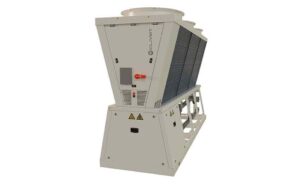Teams claim rapid, energy efficient defrost method
4th September 2019
USA/JAPAN: Researchers claim to have developed a new technique which uses less than 1% of the energy and less than 0.01% of the time needed for traditional defrosting.
Teams from the University of Illinois and Kyushu University in Japan propose applying a thin coating of a material called indium tin oxide – a conductive film often used for defrosting – to the surface of the material. A pulse of very high current is then applied to the interface between the ice and the surface.
“In order to defrost, the system cooling function is shut down, the working fluid is heated up to melt ice or frost, then it needs to be cooled down again once the surface is clean,” said lead author and University of Illinois’ mechanical science and engineering professor Nenad Miljkovic. “This consumes a lot of energy, when you think of the yearly operational costs of running intermittent defrosting cycles.”
To test the new method, the team defrosted a vertical glass plate cooled to -15ºC and to -70ºC. These temperatures were chosen to model heating, ventilation and air conditioning applications and refrigeration and aerospace applications, respectively. In all tests, the ice was removed with a pulse lasting less than one second.
The research was supported by the University of Illinois’ Air Conditioning and Refrigeration Center, the US government’s National Science Foundation, and Japanese Ministry of Education, Culture, Sports, Science and Technology.







